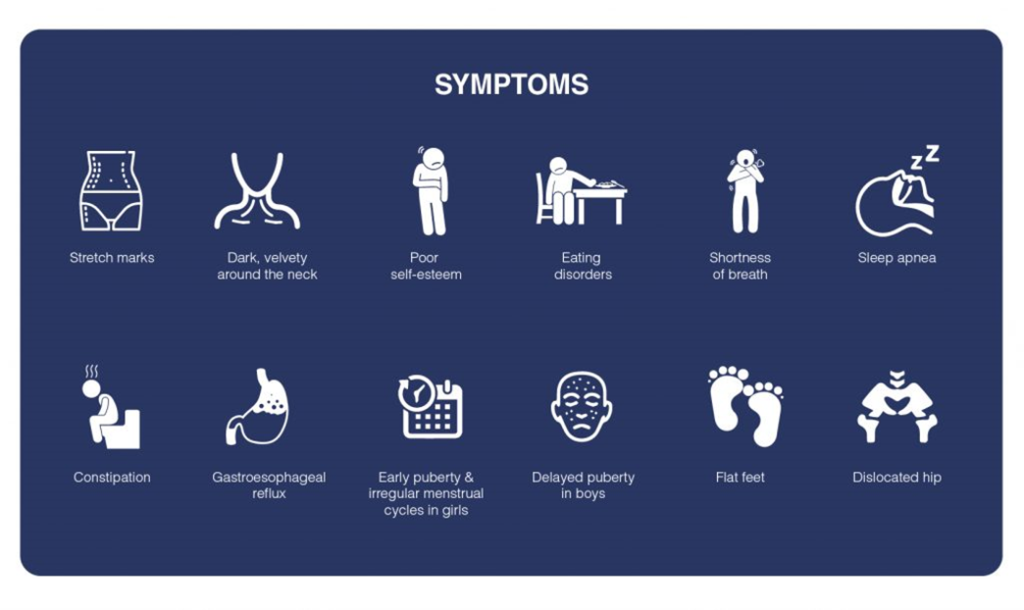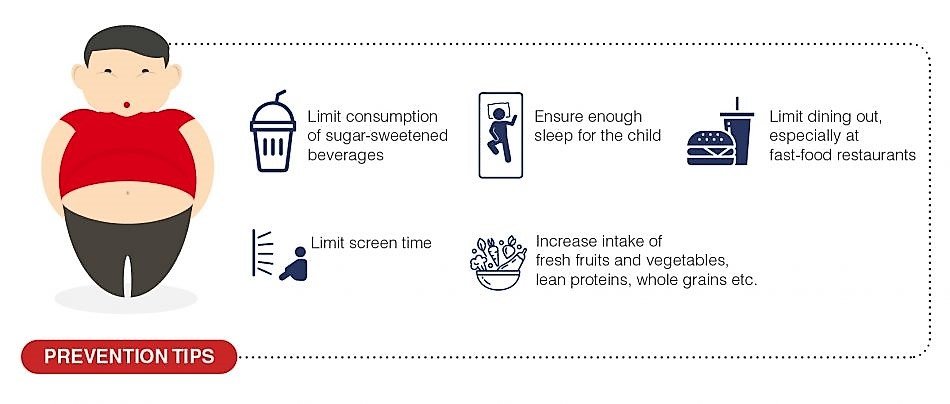Childhood obesity is a serious medical condition that affects children and adolescents. Children who are obese are above the normal weight for their age and height and are at higher risk of developing a range of health problems. Poor diet in childhood, combined with sedentary behaviors is the main causes of childhood obesity.
Thus, the sooner parents become aware of the importance of balanced eating, the more chances of reversing a situation that is already serious.
What is childhood obesity?
Childhood obesity is characterized by excess weight and body fat depending on the stage, age or height of the child. Each child has a biotype and a growth rate. However, currently childhood obesity has been one of the greatest public health challenges, in which according to the WHO, one in three children between five and nine years old is overweight. Therefore, it is important to observe overweight children and make a follow-up to ensure healthy development.
What are the causes of Childhood Obesity?
Children become overweight and obese for a variety of reasons. The most common causes are:

- Low self-esteem: Obese children often are bullied and suffer a loss of self-esteem.
- Depression: Low self-esteem can create overwhelming feelings of hopelessness, which can lead to depression in some obese children.
- Behavior and learning problems: Overweight children tend to have more anxiety and poorer social skills than normal-weight children.
What are the symptoms of Childhood Obesity?
Some of the most common symptoms of childhood obesity include:

- Appearance changes including
- Stretch marks on the hips and abdomen
- Dark, velvety skin around the neck and in other areas
- Fatty tissue deposition in the breast area.
- Poor self-esteem
- Eating disorders
- Shortness of breath when physically active
- Sleep apnea
- Constipation
- Gastroesophageal reflux
- Early puberty and irregular menstrual cycles in girls
- Delayed puberty in boys.
- Flat feet, dislocated hip
How to prevent childhood obesity?
The importance of adequate and healthy eating comes from pregnancy. This is because the baby forms his eating habits from the belly – according to the mother’s food intake – and extends to the first years of life.
That is, it all depends on what is offered and the way the child has access to food.

- Limit consumption of sugar-sweetened beverages
- Lack of physical activity, spending a lot of time in sedentary activities also contributes to the problem.
- Unhealthy eating habits such as fast foods can cause the child to gain weight.
- Genetic factors, If the child comes from a family of overweight people, he or she may be more likely to put on weight.
- Medical condition such as a hormonal problem
- Psychological issues, Children who are stressed or depressed may eat more to cope with negative emotions.
What are the complications associated with Childhood Obesity?
Obese children are more likely to develop a range of health problems, including:

Physical Complications:
- High blood pressure or heart disease: A poor diet can contribute to the buildup of plaques in the arteries causing arteries to narrow and harden leading to a heart attack or stroke later in life.
- Type-2 diabetes: Obesity and a sedentary lifestyle increase the risk of type 2 diabetes.
- Sleep disorders: Obstructive sleep apnea is a potentially serious disorder in which a child’s breathing repeatedly stops and starts during sleep.
- Nonalcoholic fatty liver disease (NAFLD): This condition usually causes no symptoms and causes fatty deposits to build up in the liver. NAFLD can lead to scarring and liver damage.
- Bone fractures: Obese children are more prone to bone fractures.
- Asthma: Children who are overweight or obese may be more likely to have asthma.
- Irregular menstruation: Overweight girls may have irregular menstrual cycles and fertility problems in adulthood.
Social and emotional complications:
- Increase intake of
- Fresh fruits and vegetables
- Lean proteins, such as chicken and fish
- Whole grains such as brown rice, whole-grain bread
- Low-fat dairy products including skim milk, low-fat yogurt.
- Limit dining out, especially at fast-food restaurants
- Adjust portion sizes appropriately for age
- Limit screen time
- Ensure enough sleep for the child
Healthy Eating and Nutrition for Children with Obesity
Changing the eating habits of children with obesity is absolutely essential. Parental influence shapes your child’s eating patterns. Most kids eat what their parents buy, so healthy eating needs to start with you.
Start your nutrition overhaul by limiting sweets and soft drinks in your home. Even drinks made from 100-percent juice can be high in calories. Instead, serve water and lower-fat or nonfat milk with meals. Cut back your fast food consumption and make a conscious effort to cook more. Preparing a meal and eating together is not only healthy in a nutritional sense, but it’s also an excellent way to sneak in some family time.
Center your meals and snacks around fresh foods instead of processed items, baked goods, or salty snacks. Try:
- fresh fruits and vegetables
- lean proteins, such as chicken and fish
- whole grains, such as brown rice, whole-wheat pasta, and whole-grain breads
- low-fat dairy products, including skim milk, low-fat plain yogurt, and low-fat cheese
Chances are good that your overweight child or child with obesity will drop some weight as they transition to a healthier way of eating. Consult your pediatrician if weight loss doesn’t occur. You may need additional help from a nutritionist or dietician.
Lifestyle Changes to Fight Childhood Obesity
There are several different strategies that can help prevent childhood obesity.
Increase Physical Activity
Increase your child’s level of physical activity to help them shed weight safely.
The U.S. Centers for Disease Control and Prevention recommends that children get at least one hour’s worth of exercise daily to remain healthy.
More Family Activities
Find activities the entire family can enjoy together. This is not only a great way to bond, but it also helps your child learn by example. Hiking, swimming, or even playing tag can help your child get active and start on the path to a healthier weight.
Cut Down on Screen Time
Kids who spend several hours a day watching television, playing computer games, or using their smartphones or other devices are more likely to be overweight.
